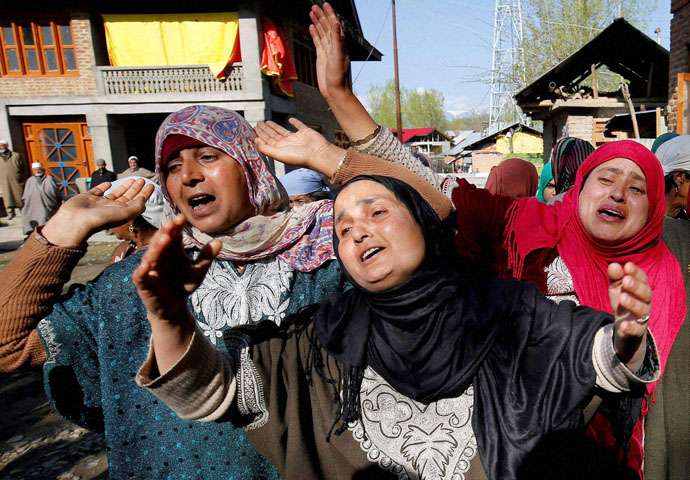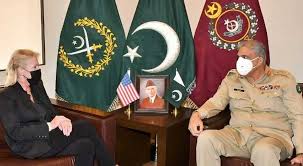
Image courtesy of globalpolitics.eu
Does the US-Taliban Peace Deal really mean peace for the region? -- OMER GHAZI
After decades of conflict, United States signs a deal with Taliban aimed at restoring peace and stability in the region. US and NATO allies have vowed to withdraw troops from the country within 14 months provided that the Islamist militant group upholds the commitment of ceasefire. This is a historic measure towards ending the decades long conflict wherein both US troops as well as the Afghan civilians sustained heavy loss of life. As the region stands at the dawn of a new era, it is essential to put this event in historical perspective and analyse the power shift in Afghanistan as well as its influence on the geo-politics of the region.
The story goes back to Cold War era of 1979 when Afghanistan was being ruled by, as oxymoronic as it might sound today, the Marxist-oriented Democratic Republic of Afghanistan. Assuming power under the leadership of Nur Muhammad Taraki, Communists were putting efforts in improving secular education, redistributing land and executing conservative religious leaders in classic Communist style. DRA had strong ties with the Soviet Union and hence, worried by the growing influence of the Soviet Union in the region, United States kicked off the notorious Operation Cyclone aimed at radicalizing and arming the militant Islamist groups in Afghanistan.
The godfather and the mastermind behind the rise of militant insurgency in Afghanistan was Zbigniew Brzezinski, the National Security Adviser to the President of The United States. It was him who convinced the Democrat President Jimmy Carter to aid the rebels already working on ground against the pro-Soviet regime in Afghanistan, hence increasing the probability of a Soviet invasion.
The funding officially began with $695,000 in 1979 and in addition to that, United States administration started funding, training and radicalizing youth to fight in the name of Islam against the Red Army. Not only the state-of-the-art weaponry but also, with the help of Saudi Arabia and Pakistan, an extremely violent interpretation of the Islamic scriptures was fed to the Afghan youth and hence, the Taliban was born. Unfortunately, little did the US know that four decades later, it will be forced to negotiate peace deals with the Frankenstein's monster it was creating which was about to bring instability not only in Afghanistan but in most of the neighbouring regions too.
Operation Cyclone was both a success and a failure, that is, a successful US foreign policy but a gargantuan humanitarian failure. Suffering heavy casualties, Soviet Union announced withdrawal of troops on 20 July 1987 and upon completion of its motive, the US funding of Hekmatyar and his Hizb-e-Islami party was immediately cut off. The region became a hotbed of financially orphaned and ideologically extremist groups that started infiltrating neighbouring countries like Iran and this is the reason that this time-period coincides with the rise of militant insurgency in Kashmir as well.
Though Brzezinski was a democrat but his revulsion towards Soviet Union and his imperialist policies put him to the right of even his predecessor Henry Kissinger who was adviser to the Republican President Richard Nixon. Upon being asked in 1998 whether he regretted launching the program and orchestrating terror groups, he answered: "Regret what? That secret operation was an excellent idea. What is most important to the history of the world? The Taliban or the collapse of the Soviet Empire? Some stirred up Moslems or the liberation of central Europe and the end of the Cold War?"
The events that followed suit revealed that the rhetorical question he posed was not supposed to be optional. The world remembers the end of Cold War but is also forced to remember those ‘stirred-up Moslems’ every day. United States had to face its own creation when a bunch of those stirred-up Muslims blew the World Trade Centre killing nearly 3,000 American civilians. President Bush demanded that Taliban deliver the Al-Qaida leader Osama Bin Laden who orchestrated the attacks and upon failing to reach an agreement, launched the Afghan War that was going to cost US a fortune.
Bush administration started pumping money into the armed invasion of Afghanistan with an estimated $23 Billion spent only in the first year. Obama administration along with NATO allies also ordered a surge of troops in the region with the boots on ground peaking at 96,900 in 2010 that was reduced to 9,800 in 2017. As per Brown University Research in 2019, Afghanistan War cost US $975 Billion that is only second to its spending in World War II which was $4.1 Trillion adjusted to inflation. According to Linda Bilmes, a senior lecturer in public finance at Harvard's Kennedy School of Government, the estimated cost of veterans' medical and disability payments over next 40 years will be more than $1 Trillion. According to Watson Institute of International and Public Affairs, as of October 2019, about 157,000 people have been killed in Afghanistan out of which more than 43,000 have been civilians. On the other hand, there have been 2,440 US military casualties in Afghanistan as of July 7, 2018 as reported in Defenselink Casualty Report.
Trillions of dollars of wealth and hundreds of thousands of casualties later, US is signing a peace deal with Taliban to withdraw its remaining troops from the region. US might be able to withdraw its troops within next few months but whether it would mean peace for the region is the big question. Though the Taliban regime faltered within two months of US airstrikes and a new US-backed government under Karzai was formed in 2004 but as per BBC reports, Taliban is openly active across 70% of Afghanistan till date.
Taliban gains its strength from two prime sources: opium, that is drug trade, and opium of the masses, that is religious extremism. Afghanistan is world's largest opium producer and most of the heroin-producing poppies are in Taliban-controlled areas that fetches them billions of dollars per year. Moreover, the militant group is also reportedly funded by Saudi Arabia and ISI to further a religious extremist agenda.
This needs to be mentioned that struggle between Afghan Army and Taliban is not only religious but ethnic as well. Taliban is dominated by Pashtuns while Afghan Army comprises of Uzbeks, Tajiks and Hazaras in large numbers in addition to Pashtuns. They have huge differences over ownership of land and power and all the ethnic groups will renew their fight to fill the power vacuum created by withdrawal of US Troops; it would also mean a betrayal of Afghan Army by US along the lines of what Kurds had to go through.
Moreover, the US-Taliban Peace Deal promises freeing of 5,000 Taliban militants imprisoned by Afghan government, by 10 March 2020. Afghan President Ashraf Ghani has objected that freeing of those prisoners is not the prerogative of US Officials but of Afghan government and that it cannot be a precondition in the deal. Therefore, a complete US troops pull-out and henceforth freeing of those militants is neither good news for the Afghan Civilians who would continue to face their atrocities nor for the neighbouring countries like India who will have to face the consequences of the mess US created decades ago.



Comments